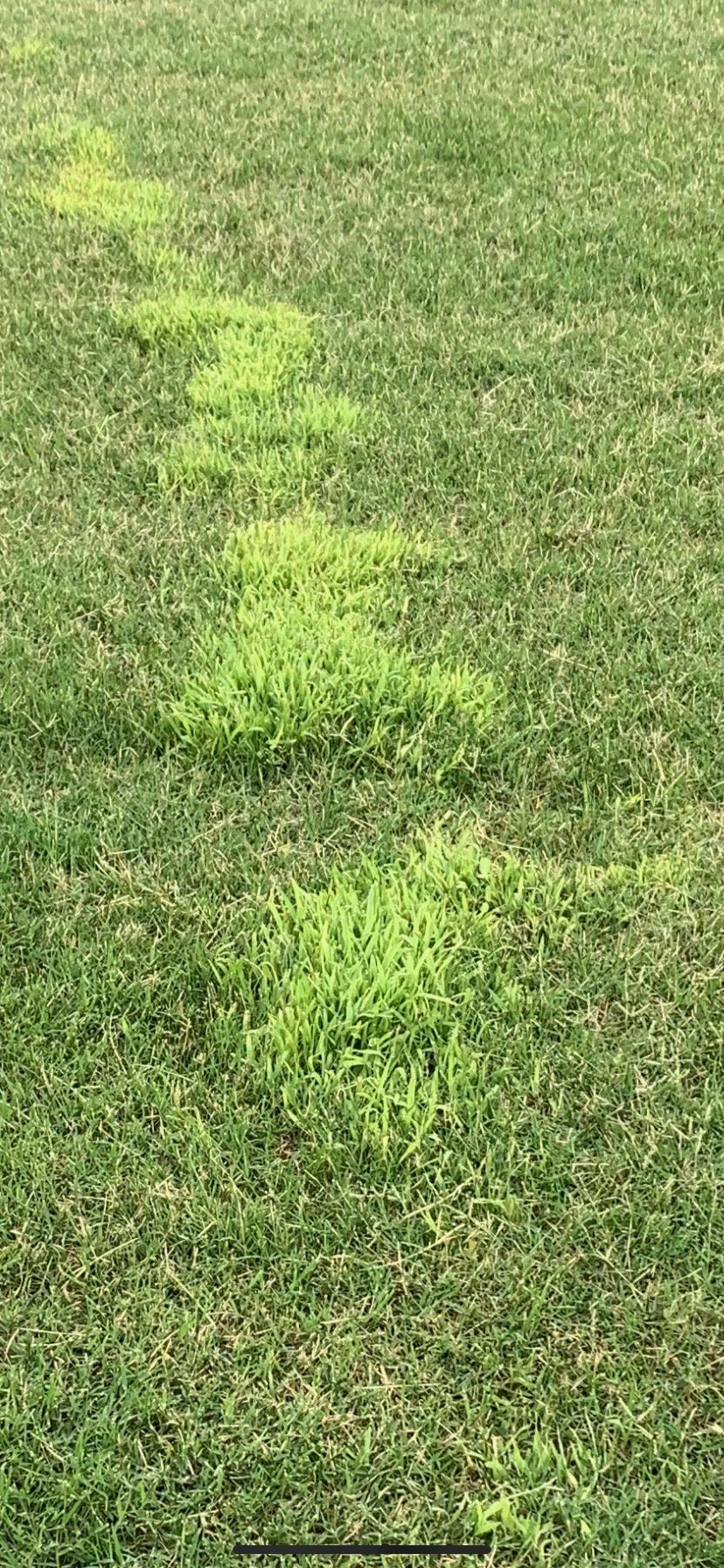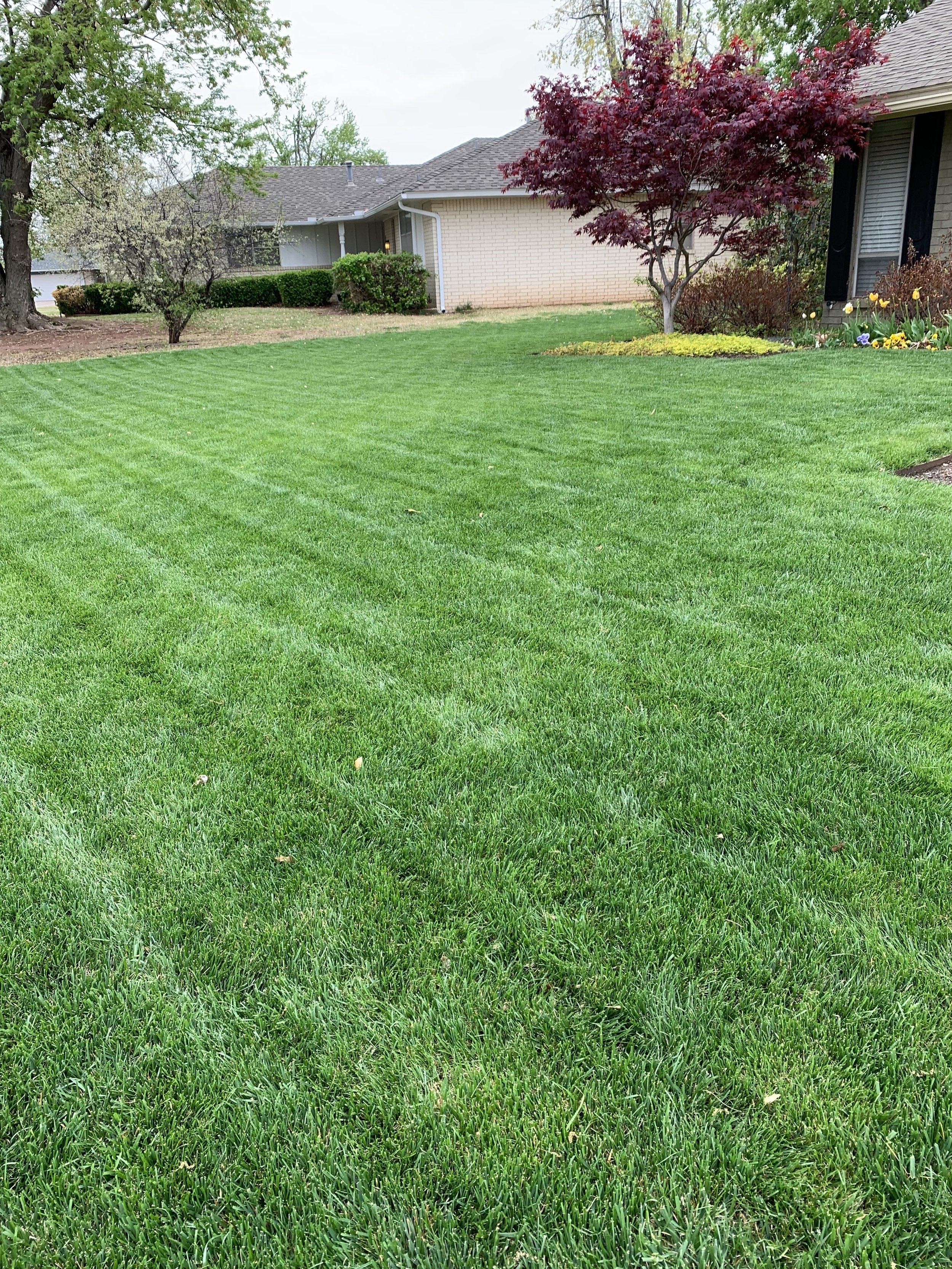Often Asked Spring Weed Control Questions
More and more spring like days have the landscape on the edge of bursting with new life!
We are all eagerly anticipating the bright yellows of Forsythia, the pink-purple Redbuds, the myriads of colorful Tulips….the list could go on and on!
That’s the exciting news!
The bad news, yes, spring does bring bad news for some lawns...
Spring also means lawns that have not been on a regularly scheduled lawn care program are bursting with weeds.
Flowering Quince is one of the early spring bloomers. Quince grows well in full sun to partial shade and has a dense spreading growth pattern.
Blooming Forsythia is a sign that you need to get a pre-emergent on your lawn if you haven’t already.
Who doesn’t love the bright color of Creeping Phlox in the early spring landscape?
Weeds generate a lot of questions this time of year. Let’s visit about a few of the most asked questions:
Is it too late to apply a pre-emergent herbicide?
When is it too late to put a pre-emergent on your lawn?
Why is it so important to prevent crabgrass?
Why is it important to apply a second pre-emergent application in the spring?
If I put a pre-emergent on my lawn every year in the spring, why do I have weeds now?
Before we get to the questions, let’s break down the word “pre-emergent”:
Pre - before. Emerge – come into view, to be seen.
A pre-emergent herbicide is used to prevent annual weed seeds from germinating by drying out the unwanted weed seed before it starts to grow.
Pre-emergent herbicides have little to no impact on weeds we are already seeing.
Henbit, an annual winter weed that is littering lawns is easy to prevent with fall pre-emergent applications.
Crabgrass seedling
Early Summer Crabgrass
Mid-Summer Crabgrass
Commonly asked pre-emergent questions:
“Is it too late to apply a pre-emergent herbicide?” (The most asked lawn care question this time of year.)
Crabgrass, the most feared annual summer weed, germinates when soil temperatures reach 55 degrees for 3 consecutive days, which is typically mid-March in central Oklahoma.
Currently, soil temperatures in the Oklahoma City metro are hovering right around 50 degrees. With a cold weekend, soil temperatures will dip into the upper 40s and then start climbing again next week.
It is not too late to prevent the germination of most summer annual weeds this year. But, it is best to apply a pre-emergent on your lawn as soon as possible.
Crabgrass is a very prolific yellowish to light green annual grassy weed that is east to prevent with a pre-emergent herbicide application.
Untreated lawns, especially thin turf areas, will have a healthy stand of crabgrass by mid April.
“When is it too late to put a pre-emergent on your lawn?”
There are two reasons why it is never too late to start a weed control program:
1. The high quality professional pre-emergent herbicide we use will control newly germinated crabgrass during the early stages of development. So, if you do not apply a pre-emergent before germination, we can gain complete control if an application is within the first 2-3 weeks of germination.
2. Not all crabgrass seeds germinate all at once. Germination will continue through the spring and early summer. Even if you don’t get a pre-emergent on at the perfect time, having some prevention is better than none.
“Why is it so important to prevent crabgrass?”
Crabgrass is the most prolific summer annual grassy weed. As an annual, it dies every year and comes back from seed the next year.
If you do not apply a pre-emergent on your lawn every year before crabgrass germination, it is certain that you will have crabgrass in your lawn during the summer.
Crabgrass is a fast grower and if left unattended will rapidly dominate turf. Just like the name suggests, it spreads low to the ground. It can be found in almost every turf and landscape setting during the summer months where a pre-emergent was not applied.
During the summer, crabgrass grows faster than turfgrass and thrives under stressful conditions of drought, heat, and low soil fertility, when turf is struggling.
Crabgrass dies in the fall after the first hard frost. But before it dies, one mature crabgrass will produce thousands of seeds.
Crabgrass will make a home in thin areas of turf this summer. Two keys to preventing crabgrass are two timely pre-emergent applications and a thick healthy lawn.
Why is it important to apply a second pre-emergent application in the spring?
Pre-emergent herbicides work by creating a barrier over the soil surface. The barrier gradually weakens over the season from foot traffic, mowing and periods of heavy rain. The edges of the lawn are the first to break down. The purpose of a second pre-emergent is to provide protection throughout the summer months.
Another reason for a second pre-emergent is to prevent other troublesome summer grassy weeds: goosegrass and sandbur.
Goosegrass germinates when soil temperatures reach 60 to 65 degrees. Because of the later germination period, it is common for goosegrass to dominate in lawns that only receive the first pre-emergent of the year. Goosegrass is common in areas of high foot traffic, compacted and poorly drained soils. Like most grassy weeds, prevention is the best medicine. Aeration is also a key step in reducing goosegrass.
Sandburs start germinating at 55 degrees soil temperatures, but they reach peak germination much later at 75-degree soil temperatures. A second pre-emergent application is critical for the prevention of sandburs. Another important characteristic of sandburs is they thrive in thin, dry turf. Two spring pre-emergent herbicide applications and a thick, healthy turf are the best defenses.
Goosegrass germinates when soil temperatures reach 60 to 65 degrees. Because of the later germination period, it is common for goosegrass to dominate in lawns that only receive the first pre-emergent of the year. Goosegrass is common in areas of high foot traffic, compacted and poorly drained soils. Like most grassy weeds, prevention is the best medicine. Aeration is also a key step in reducing goosegrass.
Sandburs start germinating at 55 degrees soil temperatures, but they reach peak germination much later at 75 degree soil temperatures. A second pre-emergent application is critical for the prevention of sandburs. Another important characteristic of sandburs is they thrive in thin, dry turf. Two spring pre-emergent herbicide applications and a thick, healthy turf are the best defenses.
If I put a pre-emergent on my lawn every spring, why do I have weeds now?
The most common weeds in lawns right now are henbit, chickweed and poa annua. All three are winter annual weeds. Henbit and chickweed are winter annual broadleaf weeds. Poa annua is a winter annual grassy weed.
Winter annual weeds need to be prevented in the fall with a pre-emergent herbicide just like summer annual weeds need to be prevented now. Winter annual weeds start germinating in September as soon as we start getting cool fall nights. Two fall pre-emergent applications are just as important as spring applications to have a weed free lawn.
The winter annual weeds currently in lawns can be controlled by mixing a post emergent herbicide with the pre-emergent application. By this time of year, winter annual weeds are reaching maturity. As annual weeds mature their growth slows as they put their energy toward flowering and producing seeds before they die.
The challenge is weeds are slower to react to weed control applications as they mature. As growth slows, they do not draw in the herbicides as quickly as they do when they are actively growing.
The solution to a clean lawn this time of year is to apply fall pre-emergent herbicides to prevent winter annual weeds.
It is always easier to prevent a weed than it is to control a mature one.
Two important take aways -
If you haven’t put a pre-emergent on your lawn yet this spring, it is not too late. But, the sooner the better!
If you have put a pre-emergent on your lawn it is important to put a second application on your lawn for season long weed prevention!
The timing of pre-emergent applications, the quality of the herbicide applied, and the right quantity are all critical components for achieving your best lawn this season.
If you are a subscriber to a Hall | Stewart Lawn Care Program, either the 7-Step Weed Control & Fertilizer or the 4-Step Weed Control Only, your lawn receives the critical First Pre-emergent Application and the important Second Pre-emergent Application every spring.
If you are not a subscriber to a Hall | Stewart Lawn Care Program, please contact us.
We want to make sure you receive timely pre-emergent herbicides to stop weeds before they start wreaking havoc on your lawn.
Preventing weeds is much easier on your lawn than trying to control them after they are up and growing. Once weeds take root, harsher products must be used that may slow turf development.
If you have questions or would like additional information about pre-emergent applications, please respond to this email or give us a call.
Lorne Hall
Hall | Stewart Lawn Care Programs
(405)367-3873



















